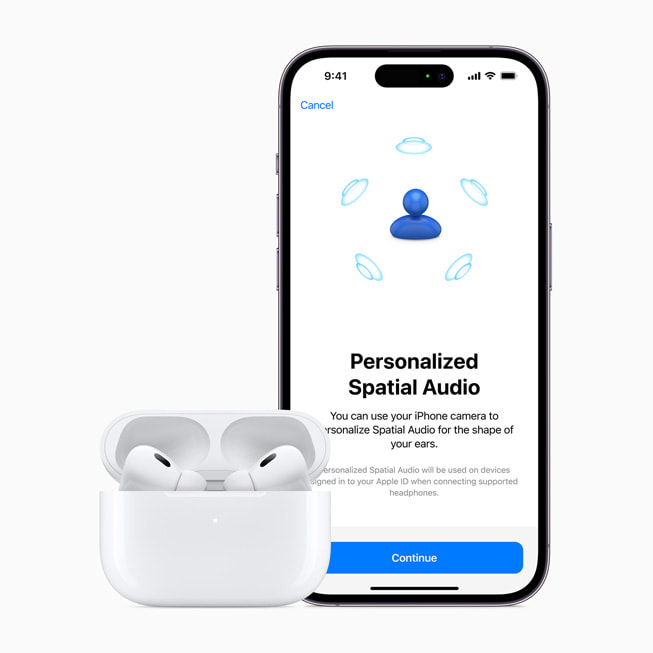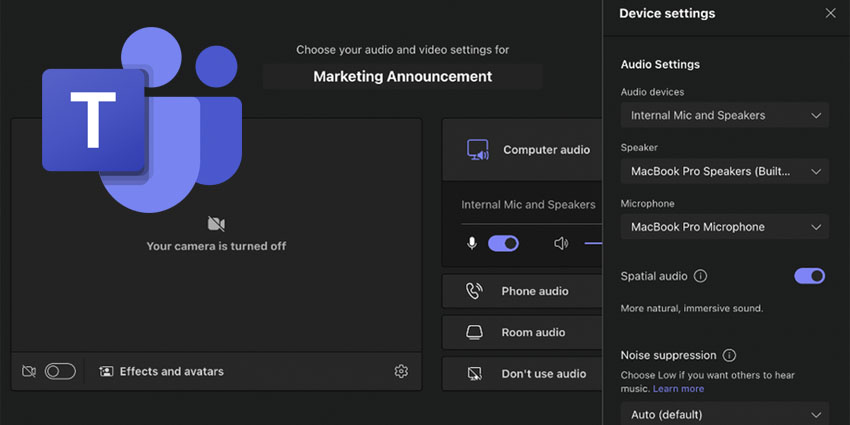For years, Apple’s AirPods have transcended their role as mere accessories, evolving into an indispensable part of the daily digital experience for millions. While major releases like the iPhone and Apple Watch often capture the headlines, the incremental yet profound evolution of personal audio devices arguably has a more intimate impact on our lives. The next generation of AirPods Pro is poised to continue this trajectory, moving beyond exceptional audio to become a central hub for spatial computing, personal health monitoring, and seamless ecosystem integration. This article provides a comprehensive technical analysis of the anticipated advancements, exploring the underlying technologies, real-world applications, and the transformative potential of what’s to come. We will delve into the core audio architecture, the deep integration with the Apple Vision Pro, the groundbreaking health features, and how these earbuds are set to redefine the personal audio landscape, solidifying their place as a cornerstone of the modern Apple experience.
A New Era for Audio: Architecture and Intelligence
The foundation of any AirPods experience is audio quality. The next-generation AirPods Pro is expected to introduce the most significant leap in audio fidelity since the product’s inception. This will likely be powered by a new, more powerful “H3” chip, enabling on-device processing capabilities that were previously unfeasible in such a small form factor. This advancement opens the door to two key areas: true lossless audio and a more intelligent, context-aware listening experience.
The Pursuit of True Lossless Audio
A major focus in recent AirPods news has been the limitation of Bluetooth bandwidth, which has prevented true lossless audio streaming. Apple is expected to address this by developing a new proprietary wireless protocol. This protocol would operate on a different frequency or use a more efficient codec, enabling the transmission of 24-bit/48 kHz (or higher) lossless audio directly from an iPhone or iPad. For audiophiles, this is a game-changing development, finally delivering the full, uncompressed sound quality that artists create in the studio. This move would position the AirPods Pro as a high-fidelity device, rivaling wired audiophile earbuds and aligning with Apple’s push for high-resolution content on Apple Music. The evolution from the simple playback of the iPod Shuffle news era to high-resolution wireless audio is a testament to decades of audio engineering.
Adaptive Audio 2.0: AI-Powered Soundscapes
The current Adaptive Audio feature is a clever blend of Active Noise Cancellation (ANC) and Transparency mode. The next generation will take this further with enhanced on-device AI. Imagine walking from a quiet office into a bustling street. Instead of a jarring switch, the new AirPods Pro could analyze ambient sound patterns in real-time, subtly ramping up noise cancellation for low-frequency rumbles like traffic while selectively allowing higher-frequency sounds like sirens to pass through for safety. This requires sophisticated signal processing, leveraging the H3 chip to differentiate between thousands of sound profiles. This enhanced intelligence, driven by the latest iOS updates news, will also improve Conversation Awareness, making it faster and more accurate at detecting speech and lowering media volume, creating a truly seamless interaction with the world around you.
The Gateway to Spatial Computing and the Vision Pro Ecosystem

With the launch of the Apple Vision Pro, the importance of high-quality, low-latency spatial audio has skyrocketed. The next AirPods Pro will not just be compatible with the headset; they will be an essential Vision Pro accessory, designed from the ground up to unlock the full potential of spatial computing. This integration will be a key driver of Apple AR news for the foreseeable future.
Ultra-Low Latency and Advanced Spatialization
For a truly immersive AR/VR experience, audio must be perfectly synchronized with visuals. Any perceptible delay shatters the illusion. The next AirPods Pro are rumored to feature an ultra-low latency connection mode specifically for the Vision Pro, reducing audio lag to an imperceptible sub-20ms. This is achieved through a direct Wi-Fi-based connection, bypassing Bluetooth’s inherent latency. Furthermore, the onboard sensors (accelerometers and gyroscopes) will be upgraded to provide more precise head-tracking data. This allows the Vision Pro to render spatial audio with pinpoint accuracy, making it feel like sound is truly emanating from virtual objects placed in your physical space. This level of integration is critical for everything from watching movies in the immersive Cinema Environment to collaborating on a 3D model with colleagues in a virtual space, a topic often discussed in iPad vision board news.
Sensor Fusion for Next-Generation AR Interactions
Beyond passive audio consumption, the new AirPods Pro could become an active input device. By combining their motion data with that of an Apple Watch or a conceptual Vision Pro wand, the system can achieve a more holistic understanding of the user’s body position and gestures. For example, a user could nod their head to confirm a Siri command or glance at a virtual object and tap their AirPods stem to select it. This sensor fusion creates a more intuitive and less obtrusive control scheme for AR, reducing reliance on hand gestures or physical controllers. This deepens the Apple ecosystem news narrative, where multiple devices work in concert to create a single, unified experience. It’s a far cry from the simple click-wheel navigation that dominated iPod Classic news back in the day.
A Wearable for Wellness: The AirPods Pro as a Health Hub
One of the most exciting frontiers for AirPods is health and wellness monitoring. Apple has been steadily adding health features to its devices, and the ear is a prime location for collecting accurate biometric data. The next AirPods Pro are expected to be a significant contributor to the latest Apple health news, transforming from a listening device into a personal health monitor.
Introducing New Biometric Sensors
Two key sensors are heavily rumored for the next iteration. First, an integrated body temperature sensor. Similar to the one in the Apple Watch Series 8 and later, this sensor could track baseline temperature overnight, providing insights into fever detection, illness tracking, and fertility cycles. Its position in the ear canal could potentially offer even more accurate core body temperature readings than the wrist. Second, the AirPods Pro could introduce features to function as a hearing health device. This could involve using the built-in microphones to perform periodic hearing tests, creating a personal audiogram within the Health app. This data could then be used to create custom audio transparency profiles, amplifying certain frequencies to aid those with mild hearing loss. This proactive approach to hearing health could be a revolutionary accessibility feature.

Privacy and Security by Design
The collection of sensitive health data necessitates a robust privacy framework, a cornerstone of Apple privacy news. All health data gathered by the AirPods Pro will be processed on-device whenever possible. When data must be synced to the Health app on an iPhone, it will be end-to-end encrypted, ensuring that not even Apple can access it. This commitment to privacy is a critical selling point and a key differentiator in the tech industry. As with all Apple devices, the principles of strong iOS security news will be applied, ensuring user data is protected and controlled by the user, a stark contrast to the data-harvesting models of some competitors.
Design, Practicality, and Ecosystem Synergy
While internal upgrades are the main story, practical design changes and deeper ecosystem integration will refine the user experience. These changes ensure the AirPods Pro remains a convenient and reliable daily companion, working seamlessly with everything from the latest iPhone to the HomePod mini.
Evolved Design and USB-C Charging

A subtle redesign is expected, focusing on improved ergonomics for a more secure and comfortable fit across a wider range of ear shapes. This may involve a slightly shorter stem and a re-contoured body. The most significant external change, however, will be the charging case. Following the trend set by the latest iPhone news and iPad news, the case will finally adopt a USB-C port, unifying the charging standard across Apple’s product line. The case may also incorporate a small speaker for more precise Find My alerts, building on the functionality of AirTag and addressing a common user pain point.
Best Practices and Real-World Scenarios
- For the Commuter: The AI-powered Adaptive Audio will be a blessing. It will automatically silence the roar of a subway train but intelligently allow station announcements to come through, eliminating the need to constantly switch modes.
- For the Remote Worker: Crystal-clear voice isolation during calls will be further improved, while the seamless switching between a Mac, iPad, and iPhone will become even faster, making it the ultimate work-from-anywhere accessory.
- For the Vision Pro User: The low-latency audio will be non-negotiable for serious use. Engaging in a spatial FaceTime call or playing an immersive AR game will feel fundamentally more realistic and present.
- For the Health-Conscious Individual: Waking up to a notification from the Health app suggesting a potential fever, based on overnight temperature data from your AirPods, could provide an invaluable early warning of illness.
This deep integration is the modern realization of the dream that began with products like the iPod and has now expanded to encompass our entire digital and physical lives. While talk of an iPod revival news cycle occasionally surfaces, the reality is that the spirit of the iPod—personal, portable, and simple access to our media—lives on and is being perfected in devices like the AirPods Pro.
Conclusion: More Than Just an Upgrade
The next-generation AirPods Pro are shaping up to be far more than an iterative update. They represent a convergence of Apple’s core ambitions: best-in-class audio, the future of spatial computing, and a commitment to personal health and privacy. By introducing true lossless audio, they will satisfy the most discerning listeners. Through deep integration with the Apple Vision Pro, they will become an indispensable tool for navigating the next computing paradigm. And with the addition of new health sensors, they will offer proactive wellness insights from one of the most convenient wearables we own. While the latest iPhone will always command attention, the upcoming AirPods Pro may be the year’s most profound and personal upgrade, fundamentally enhancing how we hear, interact with, and understand our world.











